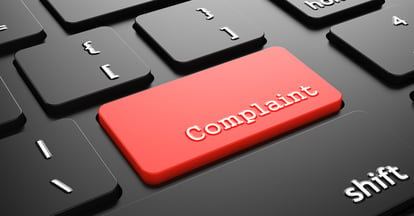 Nobody wants to have a customer complain about any aspect of their business. Complaints are negative feedback, indicative of an unhappy customer, and generally a bad thing. They can be harsh or mild, constructive or destructive, fair or unfair, deserved or not deserved. But at the core of any customer complaint, there is feedback about a customer experience, or at least their perception of that experience. And this information and feedback can be a treasure trove of information to use to improve the customer experience, your internal processes, and how your organization does business.
Nobody wants to have a customer complain about any aspect of their business. Complaints are negative feedback, indicative of an unhappy customer, and generally a bad thing. They can be harsh or mild, constructive or destructive, fair or unfair, deserved or not deserved. But at the core of any customer complaint, there is feedback about a customer experience, or at least their perception of that experience. And this information and feedback can be a treasure trove of information to use to improve the customer experience, your internal processes, and how your organization does business.
A web-based dictionary defines complaints as “objections to something that is unfair, unacceptable, or otherwise not up to normal standards”. Think of that definition as you define a complaint within your organization.
HQAA’s standard PS 8 lays out the requirements for an organization with regards to complaints. The standard says that the organization shall “receive grievances and/or complaints from clients and customers in a standardized process.” It also outlines what documentation about the complaint an organization must maintain which includes:
- Date complaint received, by whom
- Name, address, and contact number of individual contacting organization
- Issue or complaint or grievance
- Resolution of issue with attached documentation when necessary
- Any payer requirements (i.e. Medicare HIC number).
Finally, it lays out timeframes for response to complaints by the organization. Within five days of receiving the complaint, the organization must notify the person complaining that they received the complaint and let them know they are investigating it. This notification can be written, oral, email--really any format is acceptable so long as the notification takes place. Within fourteen days, the organization must provide written notification of the results of the investigation and what the response will be.
Typically, an organization will receive complaints on a specific form that documents all these required pieces of information. The form will include a narrative about the complaint and document how an organization responds. Because there are specific timeframe requirements, it is also helpful for the form to contain dates/times for when the complaint was received, when the customer was notified the complaint had been received, when the investigation concludes, and when the customer is notified of the outcome/results. In addition to this form, used for individual complaint documentation, it is also useful to maintain a log. The log lists all complaints that are filed along with resolution, and notifications. The log is a nice way to view all complaints within an organization, and makes it easier to identify trends, track your company’s progress, and improve your operation based on any complaints received.
These complaints can come to your attention in any format: email, telephonic, written, or verbal. If a customer/patient complains verbally, it will be important to gather as much information as possible. If it comes in via some written process, including email, it may require some follow up to gather additional information that the person complaining does not include.
During survey, expect the surveyor to review your organization’s policies & procedures regarding complaints, the forms you use, and of course, your filed complaints. They will be looking to ensure that complaints are resolved in a timely manner and that your documentation of any complaints includes all the required items listed above. The surveyor typically asks staff about the complaint process and all staff should be aware of how to help a customer/patient file a complaint.
So, how do these complaints, which many would think of as marks against the quality of our company’s services, help a company? How can they become a “good thing”?
Bill Gates, founder of Microsoft, famously said: “Your most unhappy customers are the greatest source of your learning”. Use any complaints that you receive as opportunities to improve. Customer’s feedback is crucial to help you understand how your business practices are perceived by the community and your customer base. When possible, fix problems and resolve complaints quickly, efficiently, and humbly. Not only will you have corrected the issue for the person complaining, but you’ve also improved whatever it is they complained about for ALL future customer/patients!


